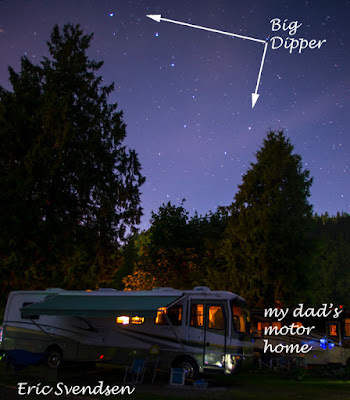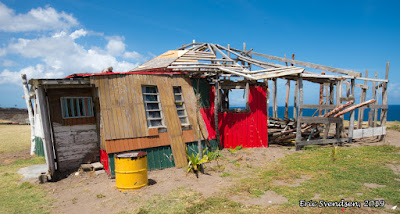 |
| A trial before hitting the trail. |
It was time. The backup camera in the rig bestowed to us by my dad was in need of replacing. I was available as I have just recently retired, and I felt up to the challenge. So, I got onto Amazon and ordered a 7" monitor which operates up to four cameras - I ordered three. They came quickly as we are Prime members and I began what was to be the ordeal of a lifetime.
The first problem was to remove the old camera and monitor. Easy enough, I thought, but that proved not to be the case. The camera had no attachment mechanism other than the sealant on the outside, and it was not visible on the inside. I opened a panel hidden inside a top cabinet and found the access port. It was small and the distance between that wall and the camera on the outside wall was at least 12 inches. No matter how hard I tried, I couldn't quite reach it.
After some uncertainty, I decided to use a reciprocal saw and cut out a larger access port. Now I could get a light in there and get my tools in to remove the hardware. I had earlier cut the sealant around the housing and it came free, although, in complete disclosure, I was guessing that this was the right thing to do. I detached the wire from the camera and put it aside; I would later use it to power my new ones.
Now I had to remove the monitor. The small screen monitor was a CRT device; it was mounted in my dash near the steering wheel. I pulled open a few access ports and lay on my back with my head stuck upwards at an awkward angle trying to see how to pull this tiny behemoth out. There - two screws that I can see. Another pair on the other side probably. I managed to get my hands in, every joint bending at some angle which it was not designed to function at. I have to give praise here to the mechanics of the land, whose hands (no doubt larger than mine), have to go through such exercises every day. I did not know being a contortionist was a requirement of the position.
With the four bolts removed I then turned my attention to pulling the device out from its snug nest. To say that it was a tight fit would be underemphasizing the truth. It was as if the Hulk was holding it in place. I don't know why they bothered with bolts; this thing wasn't going to budge. I pulled, pushed, levered, wobbled, and pried to no avail. After further inspection, I discovered rubber rings inserted in the unit's sides. Their removal facilitated success.
A break was needed to linger on the small triumph achieved; that and I was physically exhausted from the ordeal. Then I was onto the next part - mounting the new screen. This was going to be a breeze, although I was beginning to have misgivings about what I had gotten myself into. Nothing was simple to this point. The monitor itself was awesome; I powered it up directly to a battery and found it worked as advertised. I also powered a camera and yes, it did work wirelessly. Synching the devices was easy.
The trouble began right after placing the new display in front of the gaping hole now in my dash. Exactly
how was I going to mount it? I noticed it fit within the void well, and decided I would use a 6x9 inch oak board as a frame. Oak made sense because of the RV's interior decor, and I had removed an oak table earlier with the same stain colour. I cut it out using a band saw then used a sander to finish the edges, complete with rounded corners. I marked the outside shape on the back of the board and took it over to a scroll saw where I would, with great precision, extract the extraneous material.
Did you know that 3/4 inch solid oak is very hard? I drilled a hole to get the blade in so I could cut out the center and discovered that the thin blades were not up to the assigned challenge. I destroyed three of them before admitting defeat. It was time to fire up my reciprocating saw again. It would not be thwarted. Indeed, it did cut through the board with ease, although it took a lot of force to make it work.
Did you know that 3/4 inch solid oak is very brittle? It cracks easily and the violent undulations tore my almost complete project in two. Frustrated, but not beaten, I revisited the project by starting on a new piece. Cut, sand, drill, saw the middle, and all ready to go. Except that I cut it 6x8 instead of 6x9, so it was too small. Rats; there is enough wood left to give it one more try.
Now, you would think that an almost 60 year old math teacher could use a measuring tape properly, but you would be wrong. I managed to cut my last bit of wood into another 6x8 section. OK, now my sense of humour was taking a beating. I was done for the day and needed a good long break to reset my attitude and revitalize my sagging spirits.
Part II tomorrow.




























